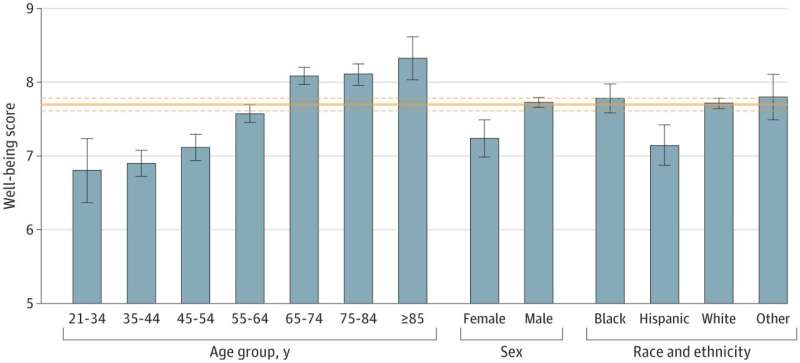This article has been reviewed according to Science X's editorial process and policies. Editors have highlighted the following attributes while ensuring the content's credibility:
fact-checked
peer-reviewed publication
trusted source
proofread
Study assesses well-being of US veterans

More than a decade ago, the U.S. Department of Veterans Affairs launched a national initiative, termed Whole Health, that takes a holistic approach to health care, emphasizing personalized care plans that address the physical, mental, and emotional well-being of veterans.
Earlier this year, the National Academies of Science, Engineering, and Medicine (NASEM) published a consensus report titled "Achieving Whole Health: A New Approach for Veterans and the Nation," which identified best practices learned from Whole Health and ways to scale and disseminate such initiatives to the entire U.S. population. This report recommended a shift in focus from a reactive disease-oriented medical care system to one that prioritizes disease prevention, health, and well-being.
To help inform this ongoing initiative, a new study led by the National Center for PTSD and Yale researchers analyzed data from a nationally representative sample of more than 2,400 U.S. veterans to examine subjective ratings and key sociodemographic, health, and psychosocial correlates of well-being. The results were published online Dec. 7 in JAMA Network Open.
"While there is an abundance of research on the epidemiology of mental disorders in veterans, scarce research has examined positive aspects of health, such as well-being," said Peter Jongho Na, MD, MPH, a psychiatrist at VA Connecticut Healthcare System, US Department of Veterans Affairs Career Development Investigator, assistant professor of psychiatry at Yale School of Medicine, and lead author of the study.
The authors found that younger, female, and Hispanic veterans had the lowest well-being scores. Further, the strongest correlates of well-being were protective psychosocial characteristics (e.g., purpose in life), number of physical health conditions, and greater age.
Veterans with higher levels of purpose in life—which refers to the extent to which individuals' lives are directed and motivated by personally-valued goals and life aims—were less likely to report lower levels of well-being, even when they had more physical health conditions.
"These findings provide new insight into psychosocial factors that may help buffer the negative effects of physical health conditions on well-being among veterans. Importantly, they suggest that interventions to promote purpose in life may help enhance well-being," said Robert Pietrzak, Ph.D., MPH, director of the Translational Psychiatric Epidemiology Laboratory of the National Center for PTSD, professor of psychiatry and of public health, and senior author of the study.
More information: Peter J. Na et al, Well-Being of US Military Veterans, JAMA Network Open (2023). DOI: 10.1001/jamanetworkopen.2023.46709




















